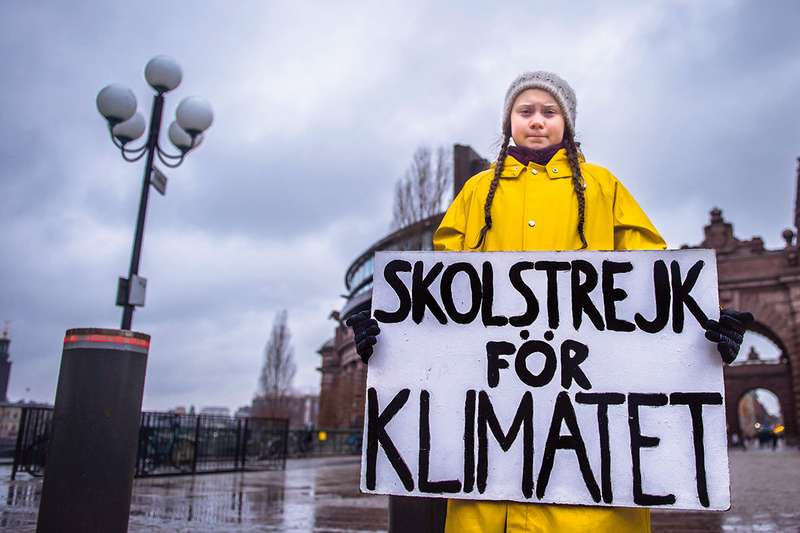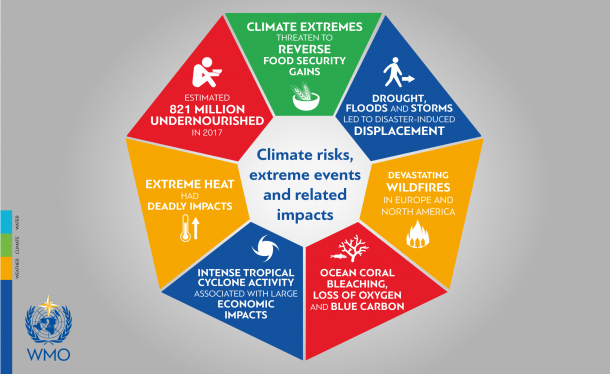

Still dependent on fossil fuels and with a no concrete solutions for its droughts and ground-water problems, the country is on the brink of an environmental crisis, writes Anupam Hazarika
When Norwegian teenager, Greta Thunberg started her movement skolstrejk för klimatet’ (school strike for climate) in August 2018, she became one of the most prominent faces of environmental activism across the globe and has helped spread the message for action across the globe.
This wave of activism is pushing for the term ‘Climate Emergency’Climate Emergency’ to replace the term ‘Climate Change’ in the existing environmental discourse. The reason behind the transition is based on the fact that the agreements signed in the Paris Summit of 2016 are not enough to tackle the consequences of climate change anymore. For instance, if the promises made in the Paris Summit were fulfilled, the Earth’s average temperature would still rise by three degree Celsius. As records show, human life cannot survive if there is a three degree increase in global temperature.

Environmental activist’s call for climate emergency is also based on the notion that it will be extremely difficult to continually re-build after severe weather events. Moreover, it is believed that the current policy commitments of governments in the global north possess the risk of accelerated melting of ice sheets which would correspond to sea level rise by approximately 70 metres. The need for urgent action to deal with climate change can be simply summarised on the fact that ‘the climate change narrative has to be changed from mitigation to adaptation since we are too late to focus on mitigation’.
The urgency for declaring climate emergency has been showcased by few countries. At present, 935 jurisdictions in 18 countries have declared a climate emergency. At present, 935 jurisdictions in 18 countries have declared a climate emergency. Populations covered by jurisdictions that have declared a climate emergency amount to 135.2 million citizens, with 39 million of these living in the United Kingdom which also the first country to sign the declaration. Overall, in Britain roughly 58 per cent of the population lives in areas that have declared a climate emergency, 62 per cent in New Zealand, 37 per cent in Canada, around 20 per cent in Switzerland, and 16 per cent in Spain. Furthermore, other countries like Scotland, Wales, Republic of Ireland and Portugal have declared climate emergency respectively.

The need for declaring climate emergency for developing countries like India is much more pressing with the demographics and socio-economic status of its population. According to a report of UN Human Rights expert Philip Alston, the world is increasingly at risk of “climate apartheid”, where the rich pay to escape heat and hunger caused by the escalating climate crisis while the rest of the world suffers. This is specifically crucial for developing countries like India. The report estimates that developing countries will bear an estimated 75 per cent of the costs of the climate crisis, despite the poorest half of the world’s population causing just 10 per cent of carbon dioxide emissions.
The effects of climate change can already be seen across India. With severe drought in the states of Karnataka, Maharashtra, Tamil Nadu, Andhra Pradesh, Uttar Pradesh and Bihar, it’s already taking a toll on the livelihoods and lives of the locals. Furthermore, the recent report by NITI Aayog has already highlighted the groundwater woes. With each year, monsoons are getting delayed; unchecked development plans are disturbing the ecology. With the potential risks from climate change, it is high time India should focus on declaring climate emergency, before it is too late.

Even if a climate emergency declaration is signed, more concrete steps have to be taken to reduce the dependence on fossil fuels. At present, renewable energy has grown by 47 per cent while coal-based energy has expanded by 18 per cent. The use of coal is increasing and predicted to double by 2040. In the report, Energizing India 2017 by NITI Aayog, it is estimated that “by 2047 coal would still make up to 38 per cent of total electricity, renewable sources would account for 26 per cent and nuclear would not exceed more than 2 per cent”. This is alarming since this will have long term adverse effects. For instance, air pollution due to mining and burning of fossil fuels would cost India 3 per cent of its GDP due to the damage it will do to people’s lives, livelihoods and health. This is just an estimate from air pollution.
For a country like India whose contribution to climate change is minimal compared to countries like the US, it would be wise to highlight the urgency and take actions for tackling climate change and its effects. With a population dependent on agriculture, as well as communities based in the coastal areas, this is the time when India should start taking concrete steps for effective adaptation. Focusing on traditional water conservation techniques, organic farming practices, impact assessment of fragile areas, and promoting and incentivising the renewable sector are some of the steps that could make India resilient from the effects of climate change in the longer run.
The writer works as a senior research associate at the Pahle India Foundation and is a recent graduate in Tourism, Environment and Development from King’s College London. His area of interest lies in Climate change, Sustainable tourism, environmental conservation and renewable technology.